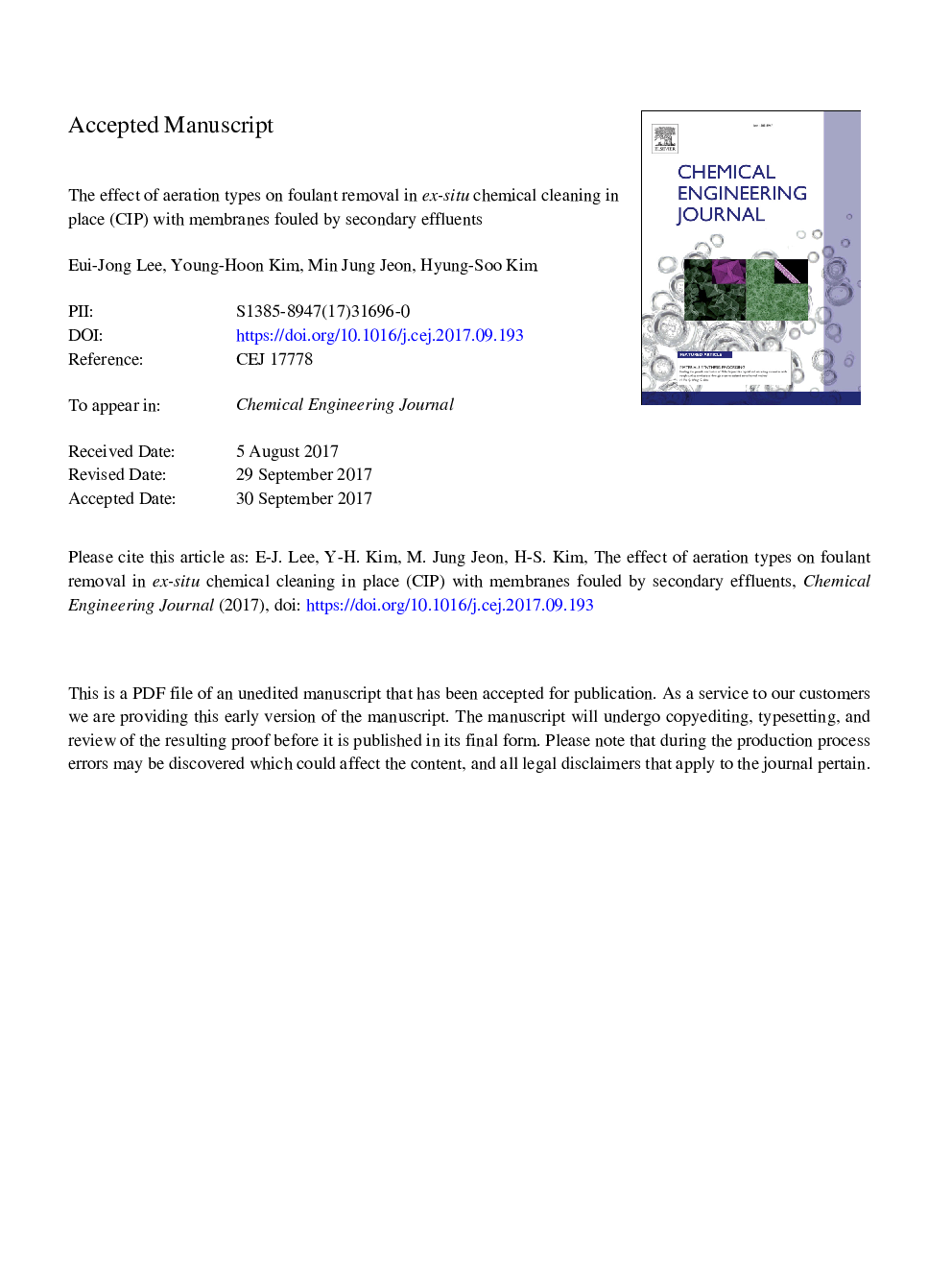| Article ID | Journal | Published Year | Pages | File Type |
|---|---|---|---|---|
| 6581084 | Chemical Engineering Journal | 2018 | 30 Pages |
Abstract
In wastewater treatment, filtration membranes that are used for extended periods of time must inevitably be cleaned with chemical agents that can influence the membrane properties. In addition, the use of secondary effluents in reclamation readily contaminates membranes with irreversible fouling. In this study, to investigate the phenomenon of fouling control by ex-situ CIP, different types of aeration (coarse bubble, microbubble) and various concentrations (100-3000â¯mg/L) of NaOCl were employed to fouled membranes by secondary effluents from wastewater treatment. The cleaning efficiencies of each cleaned membrane were evaluated after ex-situ CIP, and the selected membranes, including the fouled membrane before ex-situ CIP, were examined through comparative changes in the physicochemical properties. Microbubbles were more effective in retaining the membrane permeability in ex-situ CIP with a low concentration (100 and 500â¯mg/L) of NaOCl. Additionally, the ex-situ CIP with microbubbles showed the greatest cleaning efficiency at a cleaning time of more than 2â¯h.
Related Topics
Physical Sciences and Engineering
Chemical Engineering
Chemical Engineering (General)
Authors
Eui-Jong Lee, Young-Hoon Kim, Min Jung Jeon, Hyung-Soo Kim,
